 W
WNew media art refers to artworks created with new media technologies, including digital art, computer graphics, computer animation, virtual art, Internet art, interactive art, sound art, video games, computer robotics, 3D printing, cyborg art and art as biotechnology. The term differentiates itself by its resulting cultural objects and social events, which can be seen in opposition to those deriving from old visual arts. This concern with medium is a key feature of much contemporary art and many art schools and major universities now offer majors in "New Genres" or "New Media" and a growing number of graduate programs have emerged internationally. New media art often involves interaction between artist and observer or between observers and the artwork, which responds to them. Yet, as several theorists and curators have noted, such forms of interaction, social exchange, participation, and transformation do not distinguish new media art but rather serve as a common ground that has parallels in other strands of contemporary art practice. Such insights emphasize the forms of cultural practice that arise concurrently with emerging technological platforms, and question the focus on technological media, per se.
 W
W5uper.net was an international artist group based in Austria that focused on artistic research at the intersection of media, arts, technology and society. The group was established in 2003 by Ile Cvetkoski, Matthias Tarasiewicz, Karina Lackner and Michal Wlodkowski and was responsible for developing the Coded Cultures festival series, as well as diverse projects and exhibitions on the intersection of arts and technology.
 W
WAgrippa is a work of art created by science fiction novelist William Gibson, artist Dennis Ashbaugh and publisher Kevin Begos Jr. in 1992. The work consists of a 300-line semi-autobiographical electronic poem by Gibson, embedded in an artist's book by Ashbaugh. Gibson's text focused on the ethereal, human-owed nature of memories retained over the passage of time. Its principal notoriety arose from the fact that the poem, stored on a 3.5" floppy disk, was programmed to encrypt itself after a single use; similarly, the pages of the artist's book were treated with photosensitive chemicals, effecting the gradual fading of the words and images from the book's first exposure to light.
 W
WAnn Dancing is an artwork created in 2007 by Julian Opie an English artist and former trustee of the Tate. The sculpture was removed from its base on August 20, 2008, for repairs, and was returned on October 31 of that year.
 W
WArs Electronica Linz GmbH is an Austrian cultural, educational and scientific institute active in the field of new media art, founded in Linz in 1979. It is based at the Ars Electronica Center (AEC), which houses the Museum of the Future, in the city of Linz. Ars Electronica's activities focus on the interlinkages between art, technology and society. It runs an annual festival, and manages a multidisciplinary media arts R&D facility known as the Futurelab. It also confers the Prix Ars Electronica awards.
 W
WArt Ludique – The Museum is a 1,200m² museum in the 13th arrondissement of Paris, France, housed in Les Docks, cité de la mode et du design and inaugurated on 16 November 2013.
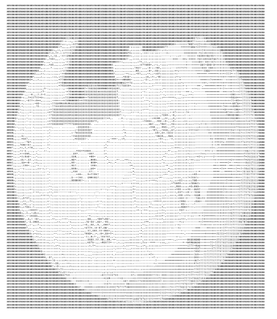 W
WASCII art is a graphic design technique that uses computers for presentation and consists of pictures pieced together from the 95 printable characters defined by the ASCII Standard from 1963 and ASCII compliant character sets with proprietary extended characters. The term is also loosely used to refer to text based visual art in general. ASCII art can be created with any text editor, and is often used with free-form languages. Most examples of ASCII art require a fixed-width font such as Courier for presentation.
 W
WComputer Space forum is a yearly computer art festival, organized by the Student Computer Art Society (SCAS) in Sofia, Bulgaria. It's one of the oldest digital art festivals in Bulgaria, founded in 1989.
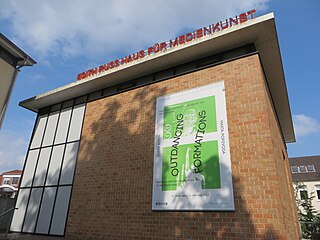 W
WThe Edith-Russ-Haus für Medienkunst is an art gallery in the city of Oldenburg, Lower Saxony, Germany, dedicated to new media art.
 W
WThe Festival Internacional de Linguagem Eletrônica is a New media art festival that usually takes place in three cities of Brazil: São Paulo, Rio de Janeiro and Porto Alegre and it has also participated in other events around the world. It is the biggest art & technology festival in Brazil, and it serves as a lead indicator of the plurality of the work created in the interactive art field not only nationally but also internationally.
 W
WThe Experimental Television Center (ETC) (1969–2011) was a nonprofit electronic and media art center located in upstate New York.
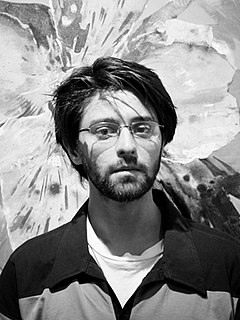 W
WAmirali Ghasemi is an Iranian independent curator, media artist, and graphic designer. He is the founder and director of Parkingallery, an art space in Tehran that has established itself as an accessible platform for young Iranian contemporary artists. He has worked at both art production and curating with the intention of showing aspects of Contemporary art in Iran that do not fall into the trope of what he calls, ‘'Chador art'’ or stereotypes of life in Iran packaged for foreign consumption.
 W
WGlitch art is the practice of using digital or analog errors for aesthetic purposes by either corrupting digital data or physically manipulating electronic devices. Glitches appear in visual art such as the film A Colour Box (1935) by Len Lye, the video sculpture TV Magnet (1965) by Nam June Paik and more contemporary work such as Panasonic TH-42PWD8UK Plasma Screen Burn (2007) by Cory Arcangel.
 W
WThe imai Foundation was founded in 2006 as imai - inter media art institute. It is an institution dedicated to the preservation, research and distribution of video art and media art and associated activities. The foundation organizes workshops, conferences, screenings, exhibitions, research projects and case studies concerning the current questions of conservation and restoration of media art. It aims to develop further the possibilities of (digital) preservation, presentation and distribution of media art.
 W
WImmersion into virtual reality (VR) is a perception of being physically present in a non-physical world. The perception is created by surrounding the user of the VR system in images, sound or other stimuli that provide an engrossing total environment.
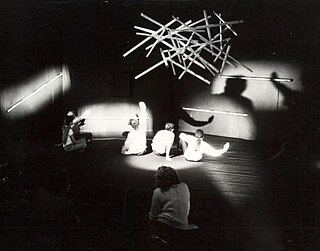 W
WInteractive art is a form of art that involves the spectator in a way that allows the art to achieve its purpose. Some interactive art installations achieve this by letting the observer or visitor "walk" in, on, and around them; some others ask the artist or the spectators to become part of the artwork.
 W
WInteractive media normally refers to products and services on digital computer-based systems which respond to the user's actions by presenting content such as text, moving image, animation, video, audio, and video games.
 W
WInternet art is a form of digital artwork distributed via the Internet. This form of art circumvents the traditional dominance of the physical gallery and museum system. In many cases, the viewer is drawn into some kind of interaction with the work of art. Artists working in this manner are sometimes referred to as net artists.
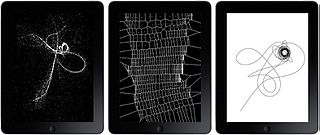 W
WiPhone art is a form of Interactive art that takes place on the screen of the iPhone, iPad, or iPod Touch. It is distinct from pictorial works of art produced with an iPhone using paint apps such as Brushes or ArtRage.
 W
WKultuurikatel aka Tallinn Creative Hub is a non-profit foundation and cultural organisation in Tallinn, Estonia situated in the Tallinn Power Plant and a medium between international culture, creative industry and private sector. Kultuurikatel organises events, workshops, performances. Yearly it organises Stalker Festival and is a partner in the Tallinn Music Week.
 W
WLive Arts Week is a project by Xing, born in 2012 out the fusion of the experiences of the two Bologna festivals (2000>2011): Netmage - International Live Media Festival and F.I.S.Co. - Festival Internazionale sullo Spettacolo Contemporaneo. Live Arts Week takes place in Bologna, Italy, once a year, and it is developed throughout one week in different locations and settings in town.
 W
WThe Multimedia Art Museum, Moscow is a Russian state museum dedicated to the presentation and development of actual art related to new multimedia technologies. The museum was opened in October 2010 on the grounds of the Moscow House of Photography.
 W
WThe Netherlands Media Art Institute (NIMk) is an international institution based in Amsterdam focusing on the presentation, research and collection of Media Art.
 W
WNTT InterCommunication Center (ICC) is a media art gallery in Tokyo Opera City Tower in Shinjuku, Tokyo, Japan. It was established by NTT to commemorate the 100th anniversary of telephone service in Japan and opened in 1997. In addition to permanent and temporary exhibitions featuring international and Japanese artists, ICC holds workshops, performances, symposia, and produces publications with the goal of advancing communication between artists and scientists.
 W
WThe Planetary Collegium is an international research platform that promotes the integration of art, science, technology, and consciousness research, under the rubric of technoetic arts. It is currently based in Plymouth University. The Collegium's Hub is the Centre for Advanced Inquiry in Integrative Arts (CAiiA), and it has had nodes in Zurich, Milan, Lucerne, Trento, Kefalonia, and currently in Shanghai. The founding President is Professor Roy Ascott.
 W
WThe Cornell University Library is the library system of Cornell University. As of 2014, it holds over 8 million printed volumes and over a million ebooks. More than 90 percent of its current 120,000 periodical titles are available online. It has 8.5 million microfilms and microfiches, more than 71,000 cubic feet (2,000 m3) of manuscripts, and close to 500,000 other materials, including motion pictures, DVDs, sound recordings, and computer files in its collections, in addition to extensive digital resources and the University Archives. It is the sixteenth largest library in North America, ranked by number of volumes held.
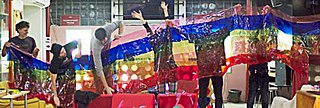 W
WTools for Action was an informal art collective working on the intersection of art and activism. As of 2019 it is formalized as Stichting Tools for Action Foundation. It acts as collaboration platform between artists, educators, activists and others interested in making and interventions with inflatable sculptures. Tools for Action aims to practice alternative forms of social engagement and resistance and open the way for experimentation.
 W
Wtransmediale is an annual festival for art and digital culture in Berlin, usually held over five days at the end of January and the beginning of February. The 2017 edition marked its 30-year anniversary.
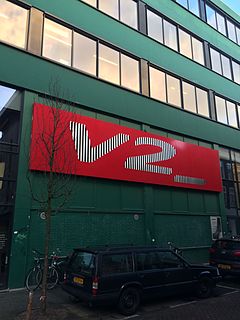 W
WV2_, Lab for the Unstable Media, founded in 1981, is an interdisciplinary center for art and media technology in Rotterdam, the Netherlands.
 W
WWORM is a Rotterdam based non-profit foundation and a multi-media alternative cultural centre focused on experimental, new media art, avant-garde and underground art, primarily music and movies. WORM is funded by the Triodos Bank and part of the culture nota 2009-2012 from the Dutch government. The foundation has received the Pendrecht Culture Prize and its venue is part of the Rotterdam culture plan.
 W
WThe ZKM | Center for Art and Media Karlsruhe is a cultural institution, which was founded in 1989 and since 1997 is located in a listed industrial building in Karlsruhe, Germany, a former munitions factory. The ZKM organizes special exhibitions and thematic events, conducts research and produces works on the effects of media, digitization, and globalization, and offers public as well as individualized communications and educational programs.